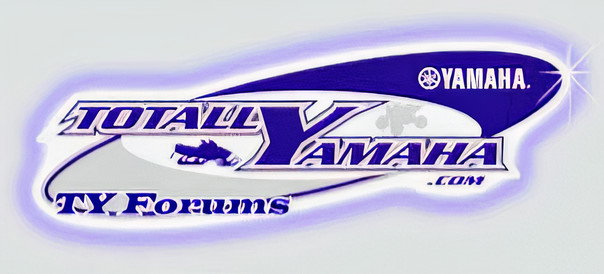Yamitriple
Member
Just in general trying to get a better idea of clutching. I have a bunch of rivets now and bought another set of weights plan to do a lot of testin. Murder yamaha gave me a good setup for 9100 with 8cr weights just trying to see what other routes one could go. I got a slightly heavier set of weights than 8cr(38g) 8dn-20's(43g) very similar shift curve. and was wondering if I could use a heavier finish rate spring and more weight to still achieve rpm without issue elsewhere. Gonna try a green white green with the 8dns, spring is a 45/136.
Yamitriple
Member
Also is there really any rule of thumb for helix angle choice? Example, more weight more angle or more weight less angle ect.
Just in general trying to get a better idea of clutching. I have a bunch of rivets now and bought another set of weights plan to do a lot of testin. Murder yamaha gave me a good setup for 9100 with 8cr weights just trying to see what other routes one could go. I got a slightly heavier set of weights than 8cr(38g) 8dn-20's(43g) very similar shift curve. and was wondering if I could use a heavier finish rate spring and more weight to still achieve rpm without issue elsewhere. Gonna try a green white green with the 8dns, spring is a 45/136.
I take the machine is a 700 red head? Just wondering why you are targeting such a high RPM. The 700 is happiest at 8500, the 600 red head is happiest at 8700.
Don't focus too much on springs, aside from engagement. Weight profiles and total weight have a much, much greater effect than spring total force.
The pipes are what decides what rpm the motor is happiest at. His pipes want 9300, just like mine.
With all other factors being the same, this is how the rpm will change with the change of one of these factors at the time:
Shallower helix end angle: more rpm.
Stiffer secondary spring: more rpm
Higher total rate of primary spring: more rpm.
Lower gearing: more rpm.
And the opposite.
Shallower helix end angle: more rpm.
Stiffer secondary spring: more rpm
Higher total rate of primary spring: more rpm.
Lower gearing: more rpm.
And the opposite.
Yamitriple
Member
That baseline helps alot Norwegian. I understand all factors affect each other, one way or the other. So lower gearing would increase rpm, which lower gearing. Would. Be adding a tooth on the top sprocket? Or lowering a tooth on the bottom?
Yamitriple
Member
My biggest blunder atm is helix selection since they ain't cheap. I'm pretty confident I can hit my rpms correctly. I was going to start with a straight angle I think just to get my rpms, then go to a multi angle I think. Idk is this the best route or will the helix change effect rpms too much and I'll just chase my tall back to the primary. I just dont really know what is going to work BEST for helix angle. I'm sure you can make anything work in theory but that doesnt mean it's getting the best result
A couple of bucks
VIP Member
What helixs do you possess right now?
Yamitriple
Member
What helixs do you possess right now?
No particular order I have a 45, 47, 46/41,51/39,51/37 and very used 51/43 I got used for nothing. Weights have 8dn-20, 89L, 8ch, 8cr, 8ek and a set of heel clickers. Springs I have a wsw ysy (short cover) gwg a max performance red and purple heelclicker red and a mystery purple spring. Secondary I believe I have green , and a red or pink
Yamitriple
Member
I have a ton of rivets everything from small aluminum all the way to 4.5 g and also 1 engagment shim and a set of secondary deflection washers
A couple of bucks
VIP Member
The 46/41 will be by far the most forgiving in your multi-angle selection.
Who manufactured it?
Who manufactured it?
Yamitriple
Member
The 46/41 will be by far the most forgiving in your multi-angle selection.
Who manufactured it?
It's a black diamond and its cut for overdrive
Yamitriple
Member
I was thinking itd be good to maybe buy a couple more just to have maybe a high start high finish like 53/43 and a 48/36 or 49/35 or to that effect
Bigger top sprocket (more teeth) gears up and bigger lower sprocket (more teeth) gears down.
A couple of bucks
VIP Member
Yamitriple
Member
How would I determine where to start when it comes to switching primary springs? Like if I want a higher initial than the wsw short cover. If I used a green white green tall cover with 8dn-20s to try and achieve 9100. The spring rate is 45-136 compared to 35-110. Since the rate is so much higher cant you run heavier weights to achieve the same thing as a weaker spring and lighter weights. Is there a way to guesstimate how much more weight u have to pull per increase in final spring rate?


